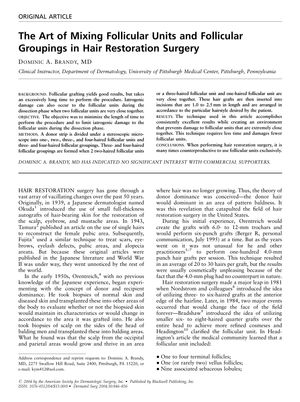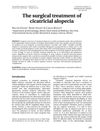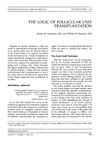Commentary
June 2004
in “
Dermatologic Surgery
”

TLDR A new hair transplant method combines individual and group follicles for better results and efficiency.
In 2004, Dominic A. Brandy, MD, discussed an improved hair restoration surgery technique that combines individual follicular units with larger follicular groupings to enhance cosmetic results, reduce surgery time, and minimize follicular damage. The traditional method of using only individual units was criticized for being time-consuming and potentially damaging. Brandy's method involves dissecting a donor strip into units and groupings, allowing for quicker and more cost-effective procedures. Three case studies were presented, with 4920, 6215, and 4621 hairs transplanted, respectively, demonstrating the technique's effectiveness and efficiency. Additionally, the commentary addressed the "cherry-picking" grafts technique, which selects naturally close follicular units for denser grafts, and challenged the notion that only 25% of donor hair is usable, suggesting that more can be harvested without significant thinning. The author emphasized the importance of technique and strategy in hair transplantation to maximize density and aesthetic outcomes.





